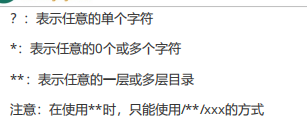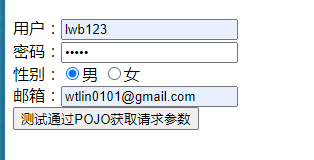SpringMVC笔记1
1.SpringMVC简介
1.1 MVC简介

1.2 SpringMVC

1.3 SpringMVC的特点

2. 使用SpringMVC完成HelloWorld
2.1 开发环境
IDE:IDEA
构建工具:Maven
服务器:tomcat
2.2 创建maven工程

依赖代码
<?xml version="1.0" encoding="UTF-8"?>
<project xmlns="http://maven.apache.org/POM/4.0.0"
xmlns:xsi="http://www.w3.org/2001/XMLSchema-instance"
xsi:schemaLocation="http://maven.apache.org/POM/4.0.0 http://maven.apache.org/xsd/maven-4.0.0.xsd">
<modelVersion>4.0.0</modelVersion>
<groupId>com.atguigu.mvc</groupId>
<artifactId>springMVC-demo01</artifactId>
<version>1.0-SNAPSHOT</version>
<!--设置打包方式为war包-->
<packaging>war</packaging>
<!--引入依赖-->
<dependencies>
<dependency>
<!--springMVC-->
<groupId>org.springframework</groupId>
<artifactId>spring-webmvc</artifactId>
<version>5.3.1</version>
</dependency>
<!--日志-->
<dependency>
<groupId>ch.qos.logback</groupId>
<artifactId>logback-classic</artifactId>
<version>1.2.3</version>
</dependency>
<!--ServletAPI-->
<dependency>
<groupId>javax.servlet</groupId>
<artifactId>javax.servlet-api</artifactId> <version>3.1.0</version>
<scope>provided</scope>
</dependency>
<!--Spring5和Thymeleaf整合包-->
<dependency>
<groupId>org.thymeleaf</groupId>
<artifactId>thymeleaf-spring5</artifactId>
<version>3.0.12.RELEASE</version>
</dependency>
</dependencies>
</project>
添加web模块

2.3 配置web.xml
注册SpringMVC的前端控制器DispatcherServlet
2.3.1 默认配置方式

<?xml version="1.0" encoding="UTF-8"?>
<web-app xmlns="http://xmlns.jcp.org/xml/ns/javaee"
xmlns:xsi="http://www.w3.org/2001/XMLSchema-instance"
xsi:schemaLocation="http://xmlns.jcp.org/xml/ns/javaee http://xmlns.jcp.org/xml/ns/javaee/web-app_4_0.xsd"
version="4.0">
<!-- 配置SpringMVC的前端控制器,对浏览器发送的请求统一进行处理 -->
<servlet>
<servlet-name>springMVC</servlet-name>
<servlet-class>org.springframework.web.servlet.DispatcherServlet</servlet-class>
</servlet>
<servlet-mapping>
<servlet-name>springMVC</servlet-name>
<!--
设置springMVC的核心控制器所能处理的请求的请求路径
/所匹配的请求可以是/login或.html或.js或.css方式的请求路径
但是/不能匹配.jsp请求路径的请求
-->
<url-pattern>/</url-pattern>
</servlet-mapping>
</web-app>
2.3.2 扩展配置方式

<?xml version="1.0" encoding="UTF-8"?>
<web-app xmlns="http://xmlns.jcp.org/xml/ns/javaee"
xmlns:xsi="http://www.w3.org/2001/XMLSchema-instance"
xsi:schemaLocation="http://xmlns.jcp.org/xml/ns/javaee http://xmlns.jcp.org/xml/ns/javaee/web-app_4_0.xsd"
version="4.0">
<!-- 配置SpringMVC的前端控制器,对浏览器发送的请求统一进行处理 -->
<servlet>
<servlet-name>springMVC</servlet-name>
<servlet-class>org.springframework.web.servlet.DispatcherServlet</servlet-class>
<!-- 通过初始化参数指定SpringMVC配置文件的位置和名称 -->
<init-param>
<param-name>contextConfigLocation</param-name>
<!-- 使用classpath:表示从类路径查找配置文件,例如maven工程中的 src/main/resources -->
<param-value>classpath:springMVC.xml</param-value>
</init-param>
<!--
作为框架的核心组件,在启动过程中有大量的初始化操作要做
而这些操作放在第一次请求时才执行会严重影响访问速度
因此需要通过此标签将启动控制DispatcherServlet的初始化时间提前到服务器启动时
-->
<load-on-startup>1</load-on-startup>
</servlet>
<servlet-mapping>
<servlet-name>springMVC</servlet-name>
<!--
设置springMVC的核心控制器所能处理的请求的请求路径
/所匹配的请求可以是/login或.html或.js或.css方式的请求路径
但是/不能匹配.jsp请求路径的请求
-->
<url-pattern>/</url-pattern>
</servlet-mapping>
</web-app>

2.4 创建请求控制器

package com.atguigu.mvc.controller;
import org.springframework.stereotype.Controller;
//注解创建bean对象并在xml文件中进行扫描
@Controller
public class HelloController {
}
<?xml version="1.0" encoding="UTF-8"?>
<beans xmlns="http://www.springframework.org/schema/beans"
xmlns:xsi="http://www.w3.org/2001/XMLSchema-instance"
xmlns:context="http://www.springframework.org/schema/context"
xsi:schemaLocation="http://www.springframework.org/schema/beans http://www.springframework.org/schema/beans/spring-beans.xsd http://www.springframework.org/schema/context https://www.springframework.org/schema/context/spring-context.xsd">
<!--自动扫描包-->
<context:component-scan base-package="com.atguigu.mvc.controller"></context:component-scan>
<!-- 配置Thymeleaf视图解析器 -->
<bean id="viewResolver" class="org.thymeleaf.spring5.view.ThymeleafViewResolver">
<!--设置视图的优先级-->
<property name="order" value="1"/>
<!--视图编码-->
<property name="characterEncoding" value="UTF-8"/>
<!--模板-->
<property name="templateEngine">
<bean class="org.thymeleaf.spring5.SpringTemplateEngine">
<property name="templateResolver">
<!--这个内部bean为解析视图的策略-->
<bean class="org.thymeleaf.spring5.templateresolver.SpringResourceTemplateResolver">
<!-- 视图前缀 -->
<property name="prefix" value="/WEB-INF/templates/"/>
<!-- 视图后缀 -->
<property name="suffix" value=".html"/>
<!--模板的模型-->
<property name="templateMode" value="HTML5"/>
<property name="characterEncoding" value="UTF-8" />
</bean>
</property>
</bean>
</property>
</bean>
</beans>
2.5 实现对首页的访问
配置tomcat服务器,编写代码
package com.atguigu.mvc.controller;
import org.springframework.stereotype.Controller;
import org.springframework.web.bind.annotation.RequestMapping;
@Controller
public class HelloController {
// @RequestMapping注解:处理请求和控制器方法之间的映射关系
// @RequestMapping注解的value属性可以通过请求地址匹配请求,/表示的当前工程的上下文路径
// localhost:8080/springMVC/
@RequestMapping("/")
public String index(){
//设置视图名称
return "index";
}
}
2.6 使用超链接跳转到指定页面
在主页index.html中设置超链接

在请求控制器中创建处理请求的方法
package com.atguigu.mvc.controller;
import org.springframework.stereotype.Controller;
import org.springframework.web.bind.annotation.RequestMapping;
@Controller
public class HelloController {
// @RequestMapping注解:处理请求和控制器方法之间的映射关系
// @RequestMapping注解的value属性可以通过请求地址匹配请求,/表示的当前工程的上下文路径
// localhost:8080/springMVC/
@RequestMapping("/")
public String index(){
//设置视图名称
return "index";
}
@RequestMapping("/target")
public String toTarget(){
return "target";
}
}
2.7 总结

3.@RequestMapping注解
3.1 @RequestMapping注解的功能

注意:如果多个控制器,多个控制器中如果类上没有注解的话,每一个@RequestMapping注解的值要确保唯一,不然会报错。
3.2 @RequestMapping注解的位置

3.3 @RequestMapping注解的value属性
多个value值有一个匹配及请求成功

@Controller
//@RequestMapping("/hello")
public class RequestMappingController {
@RequestMapping(value={"/testRequestMapping","/test"})
public String success(){
return "success";
}
}
<body>
<h1>首页</h1>
<a th:href="@{/hello/testRequestMapping}">测试RequestMapping注解的位置</a><br>
<a th:href="@{/testRequestMapping}">测试value值->/testRequestMapping</a><br>
<a th:href="@{/testRequestMapping}">测试value值->/test</a><br>
</body>
3.4 @RequestMapping注解的method属性
多个method值有一个匹配及请求成功

<body>
<h1>首页</h1>
<a th:href="@{/hello/testRequestMapping}">测试RequestMapping注解的位置</a><br>
<a th:href="@{/testRequestMapping}">测试value值->/testRequestMapping</a><br>
<a th:href="@{/testRequestMapping}">测试value值->/test</a><br>
<a th:href="@{/testRequestMapping}">测试method属性->get</a><br><!--可以请求-->
<form th:action="@{/test}" method="post"><!--无法请求-->
<input type="submit" value="测试method属性->post">
</form>
</body>
@Controller
//@RequestMapping("/hello")
public class RequestMappingController {
@RequestMapping(value={"/testRequestMapping","/test"},
method={RequestMethod.GET})//只能匹配get请求,如果没有设置method属性则对请求方法没有限制
public String success(){
return "success";
}
}
3.5 @RequestMapping的派生注解


@GetMapping(value="/testGetMapping")//只有get请求能够匹配
public String testGetMapping(){
return "success";
}
测试代码
<a th:href="@{/testGetMapping}">测试派生注解->GetMapping</a><br>
3.6 @RequestMapping注解的params属性
多个params值必须全部满足才能匹配成功


测试代码
<a th:href="@{/testParams(username='admin')}">测试params属性->/testParams</a>
@RequestMapping(value = "/testParams",
params = "username")
public String testParams(){
return "success";
}
3.7 @RequestMapping注解的headers属性(了解)

3.8 SpringMVC支持ant风格的路径

// @RequestMapping("/a?a/testAnt")
// @RequestMapping("/a*a/testAnt")
@RequestMapping("/**/testAnt")
public String testAnt(){
return "success";
}
测试代码
<a th:href="@{/a1a/testAnt}">测试ant风格的路径->使用?</a><br>
<a th:href="@{/a11a/testAnt}">测试ant风格的路径->使用*</a><br>
<a th:href="@{/a/b/a/testAnt}">测试ant风格的路径->使用**</a><br>
3.8 SpringMVC支持路径中的占位符(重点)
在控制器注解中有几个占位符,在请求地址中都要赋上几个参数

@RequestMapping("/testPath/{id}/{username}")
public String testPath(@PathVariable("id") Integer id,@PathVariable("username") String username){
System.out.println("id:"+id+",username:"+username);
return "success";
}
<a th:href="@{/testPath/1/'admin'}">测试占位符</a><br>
4.SpringMVC获取请求参数
4.1 通过ServletAPI获取

@RequestMapping("/testServletAPI")
public String testServletAPI(HttpServletRequest request){
String username = request.getParameter("username");
String password = request.getParameter("password");
System.out.println("username:"+username+",password:"+password);
return "success";
}
<a th:href="@{/testServletAPI(username = 'admin',password=123456)}">测试servletAPI</a>
4.2 通过控制器方法的形参获取请求参数

表单代码
<form th:action="@{/testParam}" method="get">
用户:<input type="text" name="username"><br>
密码:<input type="password" name="password"><br>
爱好:<input type="checkbox" name="hobby" value="a">a<br>
<input type="checkbox" name="hobby" value="b">b<br>
<input type="checkbox" name="hobby" value="c">c<br>
<input type="submit">
</form>

控制器代码
@RequestMapping("/testParam")
//若请求参数出现多个同名,可以采用字符串或者字符串数组进行接收
//若采用字符串,则结果为每个值用逗号隔开
//若采用字符串数组,则将每个值存到数组当中
public String testParam(String username,String password,String hobby){
System.out.println("username:"+username+",password:"+password+",bobby:"+hobby);
//输出结果:username:admin,password:123456,bobby:a,b,c
return "success";
}
4.3 @RequestParam

java代码
@RequestMapping("/testParam")
public String testParam(
//表示该形参用于接收请求参数username,required = false表示请求参数可以没有username
//defaultValue = "111"表示如果username参数没有传或者为空字符串时的默认值
@RequestParam(value = "username",required = false,defaultValue = "111") String username,
//表示该形参用于接收请求参数password
@RequestParam("password") String password,
//表示该形参用于接收请求参数hobby
@RequestParam("hobby") String hobby){
System.out.println("username:"+username+",password:"+password+",bobby:"+hobby);
//输出结果:username:admin,password:123456,bobby:a,b,c
return "success";
}
4.4 @RequestHeader
用法和@RequstParam类似,但需要注意的是,@RequstParam中如果没有写注释,请求参数会和形参自动映射,但获取请求头参数时不会自动映射,必须写上注释。

4.5 @CookieValues
用法跟@RequestParam类似


@RequestMapping("/testParam")
public String testParam(
@RequestParam(value = "username",required = false,defaultValue = "111") String username,
@RequestParam("password") String password,
@RequestParam("hobby") String hobby,
//表示该形参用于接收键为JSESSIONID的cookie的值
@CookieValue("JSESSIONID") String JSESSIONID){
System.out.println("username:"+username+",password:"+password+",bobby:"+hobby+",JSESSIONID:"+JSESSIONID);
//运行结果:username:lwb123,password:456,bobby:a,b,JSESSIONID:3CCBE836C7819ACFB4C347171F983B1B
return "success";
}
4.6 通过POJO获取请求参数

表单代码
<form th:action="@{/testBean}" method="get">
用户:<input type="text" name="name"><br>
密码:<input type="password" name="password"><br>
性别:<input type="radio" name="sex" value="男">男
<input type="radio" name="sex" value="女">女<br>
邮箱:<input type="email" name="email"><br>
<input type="submit" value="测试通过POJO获取请求参数">
</form>

java代码
@RequestMapping("/testBean")
public String testParam(User user){
System.out.println(user);
//运行结果:User{id='null', name='lwb123', password='fefef', sex='男', email='wtlin0101@gmail.com'}
return "success";
}
4.7 解决获取请求参数乱码的问题
注意:
(1)获取get请求参数的时候不会发生乱码问题,因为tomcat已经在配置文件中帮我们解决了,获取post请求则需要解决乱码问题
(2)解决乱码问题要在请求参数获取之前
(3)执行控制器之前,DispatcherServlet就已经获取完请求参数了,所以要修改编码,应该得在过滤器中配置(过滤器的执行在servlet程序之前)
(4)SpringMVC中处理编码的过滤器一定要配置到其他过滤器之前,否则无效

<!--配置springMVC编码过滤器-->
<filter>
<filter-name>CharacterEncodingFilter</filter-name>
<filter-class>org.springframework.web.filter.CharacterEncodingFilter</filter-class>
<!--设置请求的编码-->
<init-param>
<param-name>encoding</param-name>
<param-value>UTF-8</param-value>
</init-param>
<!--设置响应的编码-->
<init-param>
<param-name>forceResponseEncoding</param-name>
<param-value>true</param-value>
</init-param>
</filter>
<filter-mapping>
<filter-name>CharacterEncodingFilter</filter-name>
<url-pattern>/*</url-pattern>
</filter-mapping>
5.域对象共享数据
5.1 使用ServletAPI向request域对象共享数据
@Controller
public class scopeController {
@RequestMapping("/testServletAPI")
public String testServletAPI(HttpServletRequest request){
request.setAttribute("testScope","hello,servletAPI");
return "success";
}
测试页面
<a th:href="@{/testServletAPI}">测试使用ServletAPI向request域对象共享数据</a><br>
success页面获取request域数据
<body>
success
<!--获取request域中的参数-->
<p th:text="${testScope}"></p>
</body>
5.2 使用ModelAndView向request域对象共享数据
//使用ModelAndView向request域对象共享数据
@RequestMapping("/modelAndView")
public ModelAndView modelAndView(){
/**
* ModelAndView有Model和View的功能
* Model主要用于向请求域共享数据
* View主要用于设置视图,实现页面跳转
*/
ModelAndView mav = new ModelAndView();
//向请求域共享数据
mav.addObject("testScope","hello,modelAndView");
//设置视图,实现页面跳转
mav.setViewName("success");
return mav;
}
测试页面
<a th:href="@{/modelAndView}">测试使用modelAndView向request域对象共享数据</a><br>
5.3 使用Model向request域对象共享数据
java代码
//使用Model向request域对象共享数据
@RequestMapping("/testModel")
public String testModel(Model model){
model.addAttribute("testScope","hello,Model");
return "success";
}
测试页面
<a th:href="@{/testModel}">测试使用Model向request域对象共享数据</a><br>
5.4使用map向request域对象共享数据
java代码
//使用map向request域对象共享数据
@RequestMapping("/testMap")
public String testMap(Map<String,Object> map){
map.put("testScope","hello,map");
return "success";
}
测试页面
<a th:href="@{/testMap}">测试使用Map向request域对象共享数据</a><br>
5.5 使用ModelMap向request域对象共享数据
java代码
//使用ModelMap向request域对象共享数据
@RequestMapping("/testModelMap")
public String testModelMap(ModelMap modelMap){
modelMap.addAttribute("testScope","hello,ModelMap");
return "success";
}
测试页面
<a th:href="@{/testModelMap}">测试使用ModelMap向request域对象共享数据</a><br>
5.6 Model、ModelMap、Map的关系


5.7 向session和application域共享数据
两种都是通过原始的servletAPI
java代码
//向session域共享数据
@RequestMapping("/testSessionScope")
public String testSessionScope(HttpSession session){
session.setAttribute("testSessionScope","hello,Session");
return "success";
}
//向application域共享数据
@RequestMapping("/testApplicationScope")
public String testApplicationScope(HttpSession session){
ServletContext application = session.getServletContext();
application.setAttribute("testApplicationScope","hello,application");
return "success";
}
success页面代码
<!DOCTYPE html>
<html lang="en" xmlns:th="http://www.thymeleaf.org">
<head>
<meta charset="UTF-8">
<title>Title</title>
</head>
<body>
success
<!--获取request域中的参数-->
<p th:text="${testScope}"></p>
<!--获取session域中的参数-->
<p th:text="${session.testSessionScope}"></p>
<!--获取application域中的参数-->
<p th:text="${application.testApplicationScope}"></p>
</body>
</html>






















 4万+
4万+











 被折叠的 条评论
为什么被折叠?
被折叠的 条评论
为什么被折叠?








